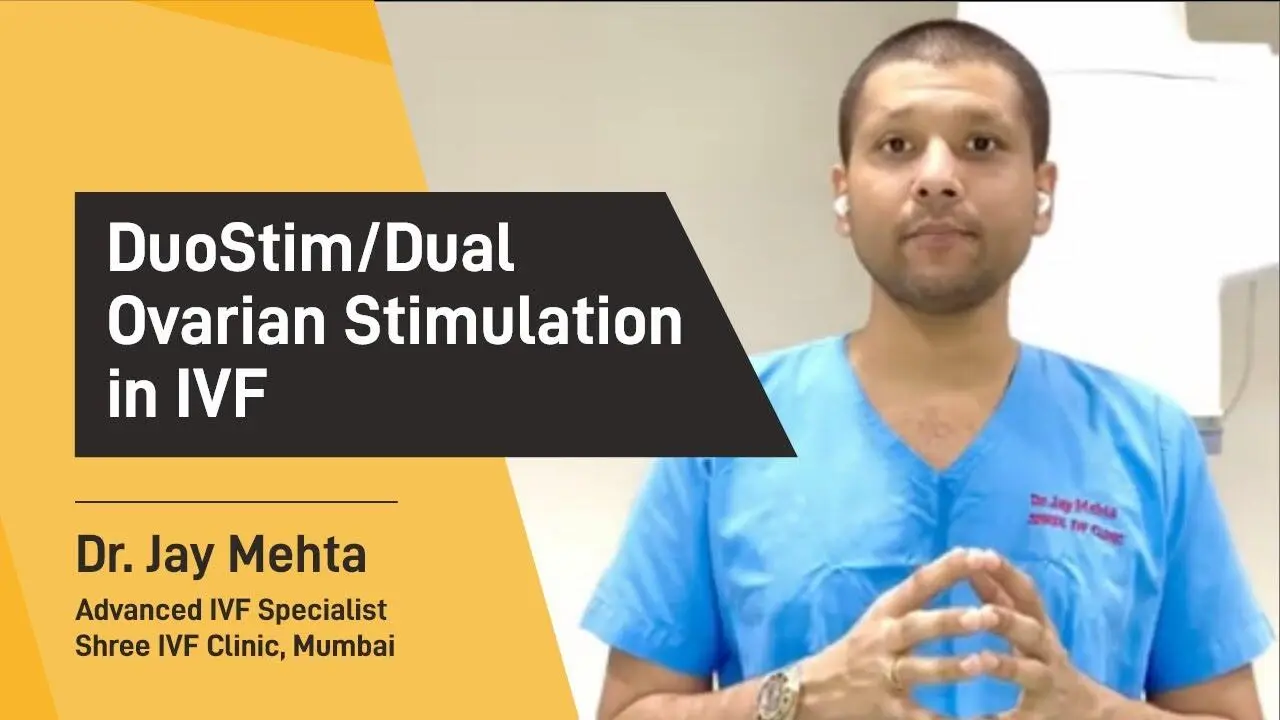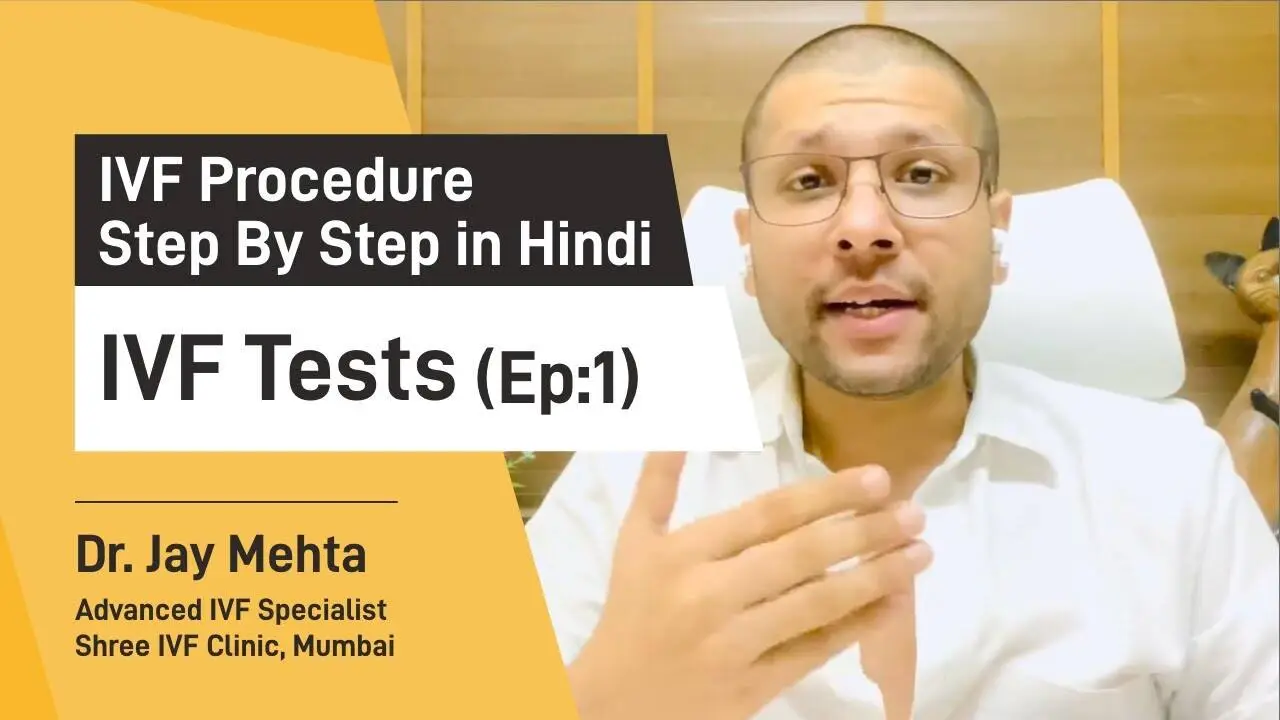IVF Stimulation Protocols and Outcomes in Women with Endometriosis
UPDATED ON 15TH JAN. 2024
Endometriosis is one of the common culprits of infertility among women. But due to a lack of awareness, a lot of women ignore this condition. If you too are struggling with infertility, it could be the possible reason. But what exactly is endometriosis? How can it be diagnosed? And what stimulations work the best? That’s what we are going to discuss in this detailed blog.
AUTHOR
Dr Jay Mehta
Scientific Director & IVF Specialist with 10+ years of experience
TREATMENT
CONDITION
GET IN TOUCH ON
What is Endometriosis and Why is it Significant for Fertility?
Also, Read- How Do I Know I Have Endometriosis?
How Does Detailed Ultrasound Help in Endometriosis?
Before starting any stimulation protocol, a detailed pelvic ultrasound is essential. This ultrasound helps identify three critical aspects:
Single Ovary Chocolate Cyst: A chocolate cyst, also known as an endometrioma, is a type of ovarian cyst filled with old blood. If the cyst is less than 4 cm, you can start stimulation with any protocol. If it’s more than 4 cm, consider draining and performing a cystectomy before starting stimulation.
Both Ovaries Chocolate Cysts: If both ovaries have chocolate cysts, the approach depends on the size. Cysts less than 3 cm can be managed with direct stimulation, while larger cysts typically require drainage and cystectomy.
Deep Endometriosis: This type involves nodules in the pelvic region. Surgery is often necessary before stimulation to remove these nodules and enhance the chances of successful conception.
What Stimulation Protocols Work Best?
There are numerous protocols to deal with endometriosis. The choice depends on the size of the cyst. Here are a few commonly adopted stimulation protocols:
Single Ovary Chocolate Cyst Protocols:
For cysts less than 4 cm, doctors can use any protocol, such as GnRH agonists, antagonists, or a random start protocol. These protocols help stimulate the ovaries to produce multiple eggs, increasing the chances of successful fertilization. If the cyst is larger, doctors prefer to perform a cystectomy to remove the cyst.
After the cystectomy, it’s advisable to wait for one to two months before starting stimulation. This waiting period allows the ovary to heal and reduces the risk of complications during stimulation.
Both Ovaries Chocolate Cysts Protocols:
If the cysts are less than 3 cm, doctors generally begin stimulation directly. Direct stimulation involves using medications to stimulate the ovaries to produce multiple eggs.
For larger cysts, the best approach is to perform a cystectomy to remove the cysts. After the surgery, it’s crucial to wait for one month before starting the protocol. This allows time for recovery and ensures that the ovaries are in optimal condition for stimulation. Larger cysts can interfere with the effectiveness of the stimulation protocol and the overall health of the ovaries.
Deep Endometriosis Protocols:
Surgery is usually the first step to remove deep nodules. These nodules can cause significant pain and complications, making it essential to address them before starting fertility treatments. This surgery is followed by stimulation protocols based on the patient’s response and condition.
Post-surgery, the stimulation protocol is tailored to the individual’s needs, considering factors like ovarian reserve and overall reproductive health. The goal is to maximize the number of eggs retrieved while minimizing the impact of endometriosis on fertility. Surgery can significantly improve the chances of successful conception by reducing the endometriotic tissue that affects ovarian function.
Why is Dual Stimulation Important?
Dual stimulation, often required for patients with bilateral endometriosis or low ovarian reserve, involves stimulating the ovaries twice in a single menstrual cycle. This method increases the chances of retrieving a higher number of eggs, improving the chances of successful IVF outcomes.
What About Poor Responders?
In cases where the initial response to stimulation is poor, particularly with deep endometriosis, it may be necessary to perform surgery to remove endometriotic tissue before attempting further stimulation. This step can significantly improve egg quality and embryo development.
Role of Surgery in Managing Endometriosis
Surgery plays a critical role in managing endometriosis, especially in severe cases. Radical excision of endometriosis, including peritonectomy, can lower AMH levels but drastically improve egg quality, embryo quality, and overall IVF outcomes.
The surgery should be performed by experienced endometriosis surgeons to ensure complete removal of endometriotic tissue and minimize the risk of complications.
When to Opt for IVF?
IVF is often recommended when both fallopian tubes are blocked, or the endometriosis is severe and cannot be managed effectively with other treatments. IVF bypasses the fallopian tubes, allowing eggs to be fertilized outside the body and then implanted directly into the uterus. This method has a high success rate, particularly for patients with severe endometriosis.
How to Manage Uterine Contractions and Endometrial Receptivity?
Endometriosis can cause abnormal uterine contractions, affecting implantation rates. To enhance endometrial receptivity:
Avoid Natural Cycle Transfers: In cases of endometriosis, it is advisable to avoid natural or modified natural cycle embryo transfers due to the risk of poor follicle rupture and out-of-phase endometrium. Hormone replacement therapy (HRT) cycles are preferred.
Use of Pre-treatment Antagonists: Pre-treatment with GnRH antagonists can help manage asymmetry in antral follicle counts and improve stimulation outcomes.
Supplements and Medications: While some experimental treatments like thymosin alpha have shown promise in improving implantation rates, their efficacy is still under research. Standard hormonal treatments and supplements prescribed by your doctor are typically sufficient.
Wrapping Up
Managing infertility in patients with endometriosis is a complex procedure. It requires expertise and experience. Most importantly, the treatment has to be tailored according to the patient’s condition. So it’s very important to consult with the endometriosis specialists in India who have expertise in the matter. Only then you can get the best results.
Remember, Endometriosis can be a complex condition. But a lot of women can still get pregnant with the right treatment. We hope this blog has offered you much-needed information on the topic. If you still have any doubts, feel free to reach out. Our experts are here to help.
AUTHOR
Dr Jay Mehta
Scientific Director & IVF Specialist with 10+ years of experience
TREATMENT
CONDITION
CALL US 24/7 FOR ANY HELP
GET IN TOUCH ON
Share Article on
Book Your Consultation Today With an Endometriosis Specialist in India – Dr Jay Mehta
Recommended Reading
DuoStim/ Dual Ovarian Stimulation in IVF
DuoStim is an option for women with low AMH, providing stimulation twice in one cycle from days 2-4 of their period to enhancing the chance for egg retrieval
Everything You Need to Know About IVF Tests
IVF tests performed before undergoing IVF include sonography, AMH, thyroid tests, and semen analysis to ensure a successful treatment process
Is There a Twin Pregnancy in IVF?
Twin pregnancies are not guaranteed with IVF. On average, only 35% of two-embryo transfers result in twins





